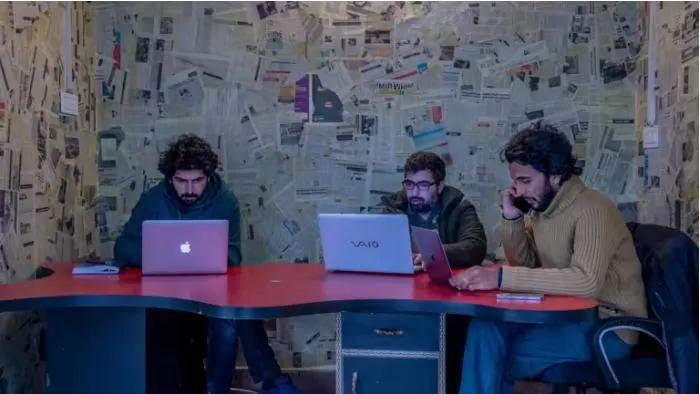Arjumand Shaheen
On Aug. 20, the website of The Kashmir Walla, the last independent news outlet in Kashmir, was blocked in India.
The next day, the prominent weekly magazine had to vacate its headquarters in Srinagar after being served with an eviction notice. The Kashmir Walla’s social media channels, meanwhile, were hidden from Indian internet users and have since gone dormant.
Known for its accountability and human rights reporting since launching in 2010, The Kashmir Walla was a rare media voice with uncompromised ethics that showcased everyday life in the conflict-ridden Indian portion of Kashmir.
Although founding editor Fahad Shah has been in police detention since February 2022 on charges of terrorism and sedition, the magazine managed to maintain regular publication up until the end despite heavy pressure from the authorities.
Practicing journalism in war-ravaged Kashmir has never been a cakewalk. Journalists must walk a tightrope in the face of threats of physical attack or worse from either separatist militants or the authorities.
The situation has worsened since the authorities moved to substantially tighten their grip with New Delhi’s decision four years ago to unilaterally rescind Kashmir’s semi-autonomous status and dissolve its state administration. For months, communication lines were blocked and security forces were everywhere.
Amid the clampdown, the authorities set up a media facilitation center for the hundreds of journalists in the Kashmir Valley, but it was equipped with only a few computers. In May 2020, local authorities issued a new media policy empowering Kashmir’s Directorate of Information and Public Relations to declare any news as fake, “anti-national” or unethical.
In India, many news media depend heavily on revenue from government advertising. But Kash-mir’s media policy now says, “There shall be no release of advertisements to any media which incite or tends to incite violence, question the sovereignty and the integrity of India or violates the accepted norms of public decency and behavior.”
In fear of losing government advertising or worse, Kashmir media have curtailed critical coverage simply as a survival mechanism amid the tough industry environment affecting media globally. The crackdown has had a bone-chilling impact on local journalists, who have gone into survival mode, living in fear of reprisal simply for doing their work.
Until recently, local media played a pivotal role in capturing insights from the ground and keeping the local community informed in the heavily militarized and unstable environment that prevails in Kashmir.
Now, local newspapers have only government handouts and news releases to offer rather than news. With the media now buffing its image, local authorities have almost succeeded in eradicating critical media voices. Journalists — including freelancers reporting for international media — who refuse to compromise their professional independence face harassment and persecution.
Amid frequent police raids on offices and homes, and official demands for information on bank accounts, assets and family relations, some journalists have quit the profession or fled overseas. But increasingly the authorities are putting journalists seen as critics on no-fly lists or otherwise barring them from foreign travel. Some labeled as national security threats have even had their passports suspended.
The Kashmir Press Club, the key independent journalists’ group in the region, was shut down through the intervention of security forces last year. Meanwhile, besides Fahad Shah, other Kashmiri journalists like Asif Sultan, Sajad Gul and Irfan Meraj languish in jail on terrorism-related charges under laws such as the Unlawful Activities (Prevention) Act.
At the same time, previously published articles seen as critical of the authorities are disappearing from media websites.
The Supreme Court of India has said that critical views on government policies should not be categorized as anti-establishment and has held up the value of speaking truth to power. But in Kashmir, censorship, harassment and attacks on journalists are restricting the flow of information and hindering the transparency and accountability needed for the proper functioning of a democratic society.
Since Narendra Modi led the Bharatiya Janata Party back into power in New Delhi in 2014, rankings of press freedom in the world’s largest democracy have gone from bad to worse. As scored by Reporters Without Borders, India is now 161st out of 180 countries in the world in terms of press freedom, behind even Taliban-ruled Afghanistan. Still, New Delhi denies that press freedom is deteriorating in Kashmir or that journalism in the region is in danger.
In any country, the media needs to be free to hold accountable the powers that be, to support democratic values and to lead the battle against corruption and tyranny. While Kashmir is losing sources of credible information and the critical voices that helped to hold power accountable in the region, we journalists will unequivocally keep hope alive inside us. This, too, shall pass one day.
[The writer is a Srinagar-based independent journalist]









